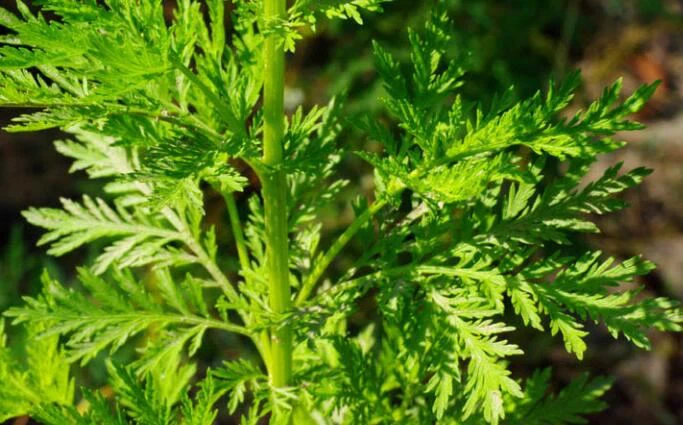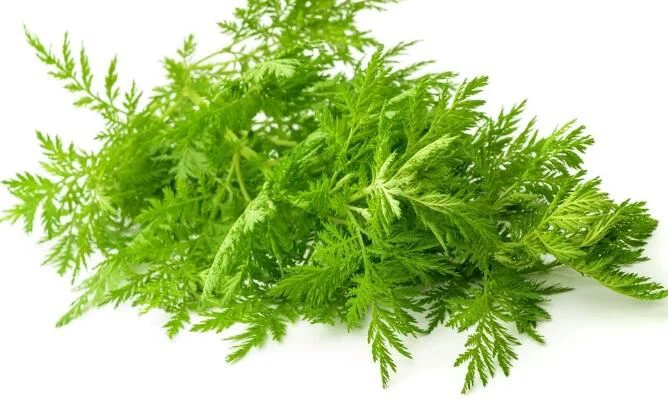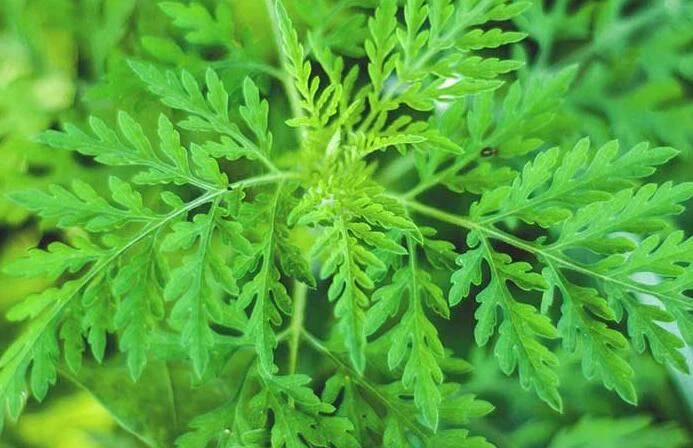What is artemisinin used for
There has been an increase is the reevaluation of traditional medicinal plants worldwide, with extensive research on various plant species and their therapeutic properties being carried out. Traditional medicinal plant remedies have been highlighted as alternative medicines that are less likely to cause adverse side effects, unlike synthetically generated chemical substances [1]. Artemisia annua L. (Asteraceae) is an annual herb native to Asia, and has been used for many centuries in traditional Asian medicine for the treatment and prevention of fever and chills. A variety of compounds have been extracted from Artemisia annua L. such as sesquiterpenoids, flavonoids, coumarins, lipids, phenolics, purines, steroids, triterpenoids, aliphatics, and artemisinin.
The main component in Artemisia annua L., artemisinin, has the formula C15H22O15 and contains a peroxide bridge (C-O-O-C) (Fig. 1). Artemisinin has been widely used for the treatment of malaria for the past two decades [4]. Additionally, artemisinin is known to have antibacterial, antifungal, antileishmanial, antioxidant, antitumor, and anti-inflammatory activity.

Artemisinin Dosage
The conventional dosage regimen for orally administered Artemisinin is 500-1000 mg (10-20 mg/kg) on the first day, followed by 500 mg daily for 4 days.
Artemisinin suppositories have been given to patients with severe falciparum malaria, at doses of 600-1200 mg initially, followed by 400-600 mg 4 h later and 400-800 mg daily for 3 days.
Generally, mefloquine 15-25 mg/kg is given 24-72 h after commencement of Artemisinin therapy.
Artemisinin is used to treat
Artemisinin is a drug derived from the Asian plant Artemisia annua. This aromatic plant has fern-like leaves and yellow flowers. For more than 2,000 years, it has been used to treat fevers. It's also an effective treatment for malaria.
Artemisinin is as an effective malaria treatment and has been studied as a cancer treatment. Early studies show promising results, but research is limited. Also, no large clinical trials have been completed.
If you have cancer, you should still pursue traditional cancer treatments. Talk with your doctor about experimental treatments, such as artemisinin, to get more information specific to your case.

Artemisinin covid-19
The pandemic with severe acute respiratory syndrome coronavirus 2 (SARS-CoV-2)1,2 has until June 2021 worldwide been associated with over 3.9 million deaths from coronavirus disease 2019 (COVID-19)3,4,5. This febrile respiratory and systemic illness is highly contagious and in many cases life-threatening. Remdesivir is the only Food and Drug Administration (FDA) approved direct acting antiviral drug for treatment of COVID-19; however, its clinical efficacy has recently been challenged6,7,8. Thus, COVID-19 treatment remains largely supportive with an urgent need to identify additional antivirals against SARS-CoV-2. An attractive approach is repurposing drugs already licensed for other diseases. A. annua plants have been employed to treat malaria in Traditional Chinese Medicine, as well as in human trials, and are used widely in many African countries, albeit against WHO recommendations.
Artemisinin vs artesunate
Artesunate represents a semisynthetic derivative of artemisinin that has improved water solubility. Cultivar of the Chinese herb Artemisia annua L. (qinhao or sweet wormwood) and its active principle artemisinin (qinhaosu).

Does artemisinin have side effects
Though artemisinin is a naturally occurring compound, taking it involves risks. In recommended doses, it may be safe for a person to take artemisinin to treat malaria or a fever.
However, people may experience the following side effects:
a skin rash, after topical use
dizziness
ringing in the ears
hearing loss
vomiting
nausea
tremors
liver problems
Is artemisinin an antibiotic
Artemisinin, one of the bioactive compounds, with antimalarial activity has been successfully isolated from A. annua. Other than antimalarial activity, artemisinin was found to be a good antibacterial, antifungal, antileishmanial, and antitumor agent. The antibacterial properties of artemisinin had been tested on a wide range of bacteria, such as Escherichia coli, Staphylococcus aureus, Pseudomonas aeruginosa, and Mycobacterium intracellulare. A broad spectrum of other secondary metabolites was found and accumulated at the aerial part of A. annua.
For bulk artemisinin, please contact us at email:herbext@undersun.com.cn
References:https://www.ncbi.nlm.nih.gov/pmc/articles/PMC4297758/
http://www.antimicrobe.org/drugpopup/artemisinin.htm
https://www.healthline.com/health/artemisinin-cancer#outlook
https://www.nature.com/articles/s41598-021-93361-y
https://academic.oup.com/cid/article/47/6/804/325924
https://www.medicalnewstoday.com/articles/324577#side-effects-and-risks
https://www.hindawi.com/journals/bmri/2014/215872/

